Through our website, we want to bring people closer to delicious, creative meals that nourish both body and soul. We don’t intend to become famous chefs –we just love food!
We firmly believe in celebrating the beauty of different cultures through their cuisine. From home kitchens to 5-star restaurants, each meal has its own secret recipe for success.
The love for Saffron initially inspired us on this journey, but our mission is much larger than that. We strive to provide helpful resources and meaningful conversations about organic farming techniques, cooking tips and culinary customs from around the world.
If you’d like to join us in showcasing your special family recipes or other noteworthy ideas relating to food culture, please reach out at [email protected] –your contribution will be highly cherished!
For now, love yourself and enjoy this one ...
Now love yourself and enjoy this one ...
Get delicious and juicy Corn On The Cob every time with this recipe that details how to get those ears to your tummy.

Table of Contents
I’ve found, over the years I’ve been working on this site, that recipes aren’t always developed to teach you how to make a new dish. Sometimes they help you make a familiar dish but in a new way. That’s what we’re doing with this recipe. Sure, it’s for corn on the cob, a dish you’ve no doubt done in a pot of boiling water or on the barbecue, but this is another arrow in your quill. It produces sweet and crunchy corn every time while retaining all those nutrients, some of which you lose when using those other cooking methods.
Do I still love that smoky taste of corn done outside alongside my burgers and steaks? Sure, I do. But whenever I discover a new method of cooking—one that prioritizes nutrition while still maintaining taste and satisfaction—you better believe I’m going to sing it from the rooftops (or blog about it online, as it were).
Is Steam Corn Healthy?
There are two parts to this question. First, corn on the cob is very healthy. It’s a vegetable with vitamins, minerals, antioxidants, and fiber. We don’t add anything to it so the food remains “pure” with none of its nutrients compromised. Second, steaming is a great way to prepare corn without robbing it of some of its nutrients, like water-soluble vitamins. Things like the degree of heat and the length of exposure to that heat impact a food’s nutritional value, which is where steaming excels. Thanks to the simplicity of the recipe, corn on the cob can be enjoyed on vegetarian, vegan, dairy-free, and gluten-free diets. It is a grain, so isn’t paleo friendly; it contains lots of carbs, so it isn’t suitable for a keto/low-carb diet.
Is Corn a Vegetable? A Fruit? A Grain?
Yes, to all of them. First, it is technically considered a fruit if, by ‘fruit’, you mean the edible bit of a flower’s ovary. (Think about that the next time you bite into an apple!) Each kernel is a seed that grows from the ovaries inside the ear (yay, food science!). As for the vegetable v grain debate, it really depends on when the corn is harvested. Corn on the cob, for instance, is harvested early in the corn’s life, while it is still young and juicy, and is considered a starchy vegetable. If you let that corn fully mature and dry out, it becomes a grain. At this point you can mill it to produce cornmeal.
INGREDIENTS
- 3 ears of corn
- water (for steaming)
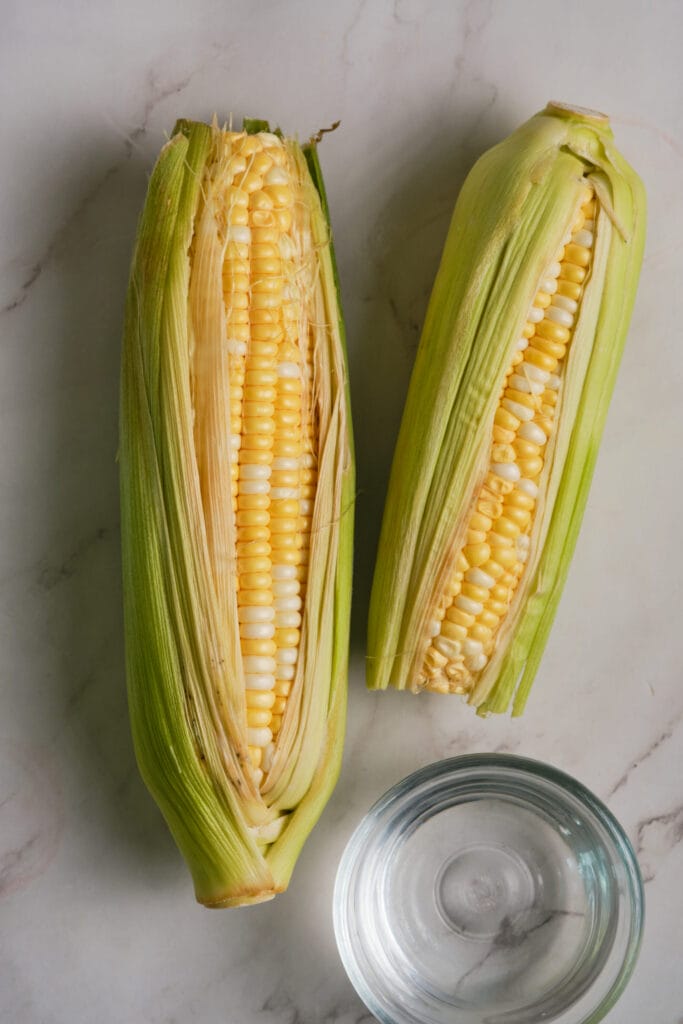
INSTRUCTIONS
Prep
Husk the corn and remove silk. Cut to fit the steamer if needed.
Boil
Fill a pot with water and bring to a boil, ensuring the steamer basket is not submerged.
Steam
Place the corn in the steamer basket, cover, and steam until desired tenderness.
Serve
Carefully remove the corn, dress as desired, and enjoy.
Devour!

FAQs & Tips
Corn on the cob is best eaten shortly after cooking, but if for some reason you need to cook it earlier than that, steam it then give it an ice bath to prevent the internal heat from continuing to cook the cobs. Then wrap it up in plastic or aluminum foil to retain moisture and stick it in the fridge for up to two days.
That’s definitely an option. Leaving the husk on helps retain moisture. It will take a bit longer to do though, so if time is a factor, you may want to remove the husks.
Assuming the corn has cooled completely, wrap each one in plastic or aluminum then put them in the fridge for up to three days. You can also freeze the cobs for up to three months, though corn on the cob loses its crunch and freshness relatively easily, so the sooner you eat it, the better. In fact, instead of freezing the cobs, I suggest removing the kernels with a knife and reusing them in a salad or as a topping on Taco Tuesdays.
The corn will take on a brilliant yellow color and the kernels will be just about ready to burst with juices. Give one a prick with a fork. If the kernel skin feels ‘tight’, it’s good to eat. You can also use a food thermometer if you want to take the guessing out of the equation. It should be between 150° and 170°F.
There are three main kinds of corn; two are usually reserved for milling. The last kind is sweet corn. If you are eating juicy corn, it is a sweet corn. You can break the category down even further based on the amount of sugar each type of corn contains: standard (SU), sugar-enhanced (SE), and super sweet (SH2). Peaches and cream corn, for example, is considered an SE corn, as it contains more sugar than your normal ear.
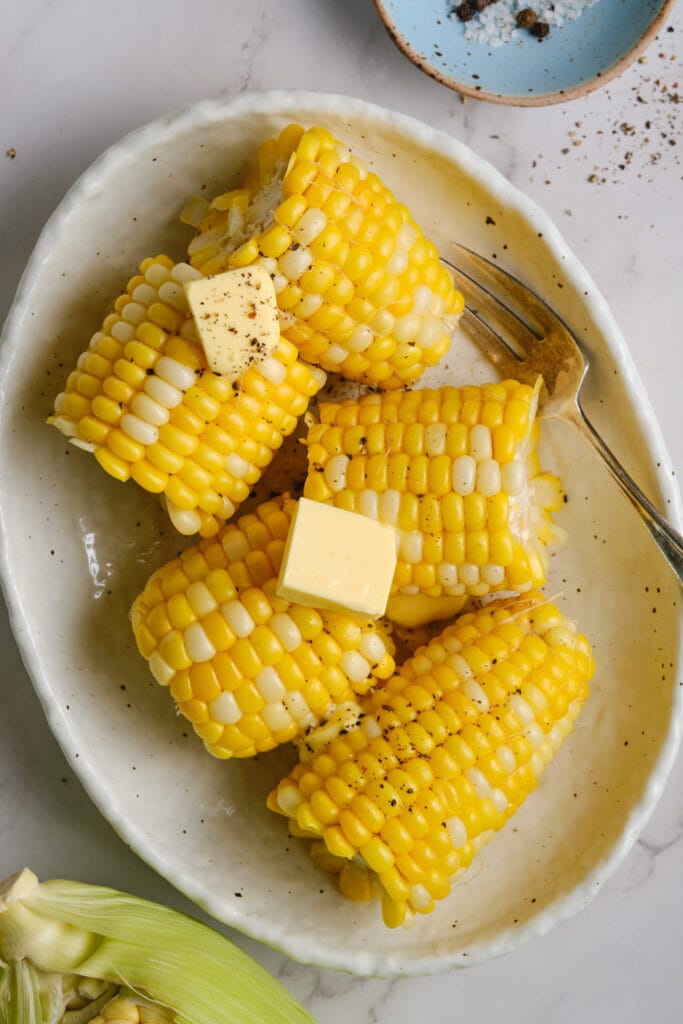
Serving Suggestions
You know how you can add pretty much anything these days to popcorn? Well, you can do the same thing with corn on the cob. Butter, salt, and pepper are the standards, but if you’re even a bit more daring, you should try grated Parmesan (or some other hard cheese), dill, parsley, chives, cilantro, chili flakes, and/or mayonnaise.

Steamed Corn on the Cob
Ingredients
- 3 ears of corn
- water (for steaming)
Instructions
- Prepare your ingredients by husking the corn and removing any silk. If necessary, cut the corn to fit your steamer basket.
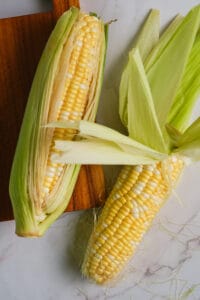
- Pour about 2 inches of water into a large pot, ensuring the water level is below the steamer basket. Bring the water to a rolling boil over high heat.

- Carefully place the corn into the steamer basket using tongs, then cover the pot with a lid.
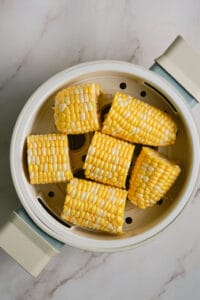
- Steam the corn for 4 minutes for a crisp texture or longer for softer kernels, checking the water level periodically.

- Once the corn is steamed to your liking, turn off the heat and remove the corn with tongs. Serve with optional butter, salt, and pepper.
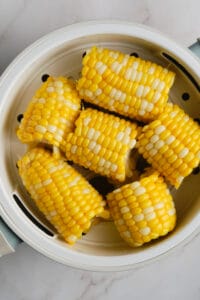
- DEVOUR!
The post How to Steam Corn on the Cob appeared first on Food Faith Fitness.
References:
By: FoodfaithfitnessTitle: How to Steam Corn on the Cob
Sourced From: www.foodfaithfitness.com/steamed-corn-on-the-cob/
Published Date: Wed, 13 Mar 2024 19:38:02 +0000
Frequently Asked Questions
Which plant can heal wounds?
Plants are amazing creatures. They grow, they live, and they die. They make food, clean our air and water, and help keep us healthy. But plants also do more than that...they heal wounds.
Plants release molecules called phytochemicals when they are injured. These chemicals act as antioxidants, which protect cell membranes from damage and promote healing.
Phytochemicals found in plants include flavones (found in citrus fruits), terpenoids (present in mint leaves), and polyphenols (common in berries).
In addition to these protective compounds, plants contain proteins, vitamins, minerals, amino acids, fatty acids, and carbohydrates that support the body's natural processes of healing.
The best way to use plants to heal wounds is to consume them directly. However, there are ways to apply the power of plants to treat wounds without eating them.
First, soak a cotton ball in an extract from the St John's Wort herb. This product contains salicylic acid, which helps reduce inflammation.
Next, place the soaked cotton ball on the wound. Avoid applying the herb directly to open cuts, burns, or puncture wounds. If you feel any burning sensation, remove the herb immediately.
You may also find that placing a few drops of essential oil on the affected area promotes faster healing. Lavender essential oil reduces swelling and speed recovery; rosemary stimulates blood flow and increases circulation; peppermint relieves headaches and muscle aches.
If you want to try your hand at growing some of your medicinal herbs, here are some tips:
- Start with small pots, so you don't end up with too much of one particular type of plant.
- Grow several different types of herbs together. The same goes for flowers and vegetables. Mixing it up will ensure you get all the benefits of each plant.
- Use organic fertilizer if you're growing your herbs indoors. Non-organic fertilizers may be harmful to your health.
- Harvest regularly. You'll enjoy the freshness of homegrown herbs, but leave enough time between harvests to allow the soil to replenish itself.
- Be careful not to overwater your plants. Overly wet soil encourages mold growth, which isn't suitable for your herbs.
- Wash your hands after handling your herbs. You don't want to risk spreading bacteria onto your plants!
What spice is good for inflammation?
Turmeric is one spice that can be beneficial for reducing inflammation. It contains the active ingredient curcumin, which has been studied extensively and shown to have anti-inflammatory effects on the body. Other spices like ginger, cinnamon, cayenne pepper, garlic, and cardamom may also reduce inflammation in the body. Adding these spices to your diet can help reduce inflammation and promote overall health.
Another spice that can be used to reduce inflammation is black pepper. The active ingredient in black pepper, piperine, has been studied and found to have anti-inflammatory properties. It may also help reduce pain associated with inflammation. Additionally, the spice contains antioxidants which are beneficial for overall health.
Adding black pepper to your diet may help reduce inflammation and promote overall health. Be sure to talk with your doctor before adding any spice to your diet, as some spices may interact with your medications or supplements. Eating various healthy foods, including spices with anti-inflammatory benefits, can help keep your body balanced and reduce the risk of chronic inflammation-related illnesses.
In summary, adding spices to your diet can be beneficial for reducing inflammation and promoting overall health. Spices like turmeric, ginger, cinnamon, cayenne pepper, garlic, cardamom, and black pepper have all been studied for their potential anti-inflammatory effects.
Which plant has antibiotic and wound-healing properties?
People often ask about plants that have medicinal uses. Some of these include aloe vera, eucalyptus, chamomile, and lavender. If you're wondering why there aren't any plants used for cleaning and disinfecting purposes, it's because most plants have toxic qualities.
The reason why we use herbs for medicine is that they contain compounds that stimulate our immune system. This means that they help us fight infections and heal wounds.
Some plants also have anti-inflammatory properties. These include ginger, turmeric, and mint.
Herbs such as basil, fennel, marigold, and oregano are great for cleansing the body.
There are even some plants that help prevent cancer. Research shows that black raspberries may reduce the chances of developing breast cancer. The same goes for broccoli. It can help prevent colon cancer.
What is the difference between "regular" and smoked paprika powder?
Regular Paprika Powder (Piment d'Espelette) is an essential ingredient for our recipes. We use it for its intense flavor and color. It's also used as a spice and seasoning agent. Smoked Paprika Powder (Paprika Chorizo) adds a smoky taste and aroma to dishes. Both types of Paprika Powder come from Spain, where they grow the best peppers in the world.
Smoked Paprika Powder (Chorizo Paprika) is made from red peppers, which are dried slowly in special ovens. This gives them a rich flavor. They are then ground and mixed with salt, garlic, and spices.
Regular Paprika Powder (Espelette Paprika) is made by grinding green bell peppers without additives.
Why do some love coriander and others don't?
Some people hate coriander, while others love it. But why?
Coriander is an herb that grows in warm climates throughout the world. It is native to both North America and Europe.
The leaves of the plant are used in cooking and can also be found in condiments such as salad dressings and dips. When added to food, coriander provides a spicy flavor.
Many people love its taste because it adds a fresh flavor to dishes without overpowering them. Others dislike the smell and taste of coriander because they find it too strong.
But there is more to coriander than meets the eye. There are two types of coriander – sweet and hot. Sweet coriander is milder and sweeter tasting compared to hot coriander.
Sweet coriander is usually grown for its seeds, often called cilantro. This type of coriander is easy to grow and is very low maintenance.
Hot coriander is most commonly used in Indian cuisine. Hot coriander gives a rich flavor to curries and sauces, making it popular among Indians.
Some people say that hot coriander tastes better than sweet coriander. However, the opposite is true for those who prefer sweet coriander.
There are many reasons why people enjoy different varieties of coriander. For example, one person may love the taste of coriander, while another enjoys the aroma.
Whether you like sweet or hot coriander, you might be surprised to learn that you can buy both types of coriander online.
Statistics
- The global herbs market is expected to reach more than $125 billion by the end of 2025.
- Studies have shown that cinnamon can lower fasting blood sugars by 10-29% in diabetic patients, which is a significant amount (9Trusted Source10Trusted (healthline.com)
External Links
[TAG34]
[TAG36]
[TAG38]
- Ashwagandha | Memorial Sloan Kettering Cancer Center
- Grape Seed | Memorial Sloan Kettering Cancer Center
[TAG41]
How To
How do I know if my herbs have been treated with pesticides?
If you see a pesticide label on your herbs, the plants were sprayed with chemicals before being sold to you.
These chemicals harm human health and could cause cancer or other serious illnesses.
Unfortunately, this practice has become common around the globe. Many countries allow farmers to spray their crops with pesticides without proper regulation.
In order not to harm themselves, consumers should always ask about the source of their produce. If it comes from a farmer near you, it’s safe to assume it was not treated with pesticides.
However, there are still ways to ensure that your herbs are free from harmful chemicals.
However, if you want to ensure that your herbs aren’t contaminated, you can purchase organic herbs directly from the farm.
This way, you won’t need to worry about the safety of your herbs. You can trust that they weren’t exposed to harmful chemicals.
 |
[TAG44]This Irish kale colcannon recipe is perfectly buttery and fluffy and easy to make with a handful of basic ingredients. St. Patrick’s Day is just around the |
 |
[TAG45]Hello hello! Just wanted to pop in with a cute little life update. ♡ I’m delighted to share that our sweet son, Milo Alexander Martin, came to join our family |
 |
[TAG46]Easy to make full flavoured recipes. Life is too short for boring food! |
 |
[TAG47]This vibrant lemony broccoli pesto pasta is quick and easy to make and full of fresh flavors. Your veggies, greens, and pasta…all in one gorgeous dish! ♡ We’re |
 |
[TAG48]This simple roasted carrot soup recipe is made with creamy tahini and topped with crispy za’atar chickpeas. Naturally gluten-free, vegetarian and vegan. If you |
 |
[TAG49]HEALTHY & KID-FRIENDLY MEALS easy dinner recipes made in minutes. The Latest Recipes st. Patrick's Day Recipes Hello! I'm Sara! Welcome to Dinner at the Zoo! |
 |
[TAG50]My longtime favorite flourless cake recipe is decadently rich and delicious, naturally gluten-free, and easy to make in under 1 hour! Trust me, this flourless |
 |
[TAG51]This vegetarian cabbage roll soup is filled with protein-rich lentils and all of the delicious flavors you love from traditional cabbage rolls. Naturally |
 |
[TAG52]From comfort foods to indulgent dishes browse hundreds of recipes that your family will love and make over and over again. Cooking Classy has never been easier, |
 |
[TAG53]These zesty roasted sweet potato and chickpea bowls are layered with sautéed spinach and brown rice and tossed with my favorite 4-ingredient chipotle tahini |
 |
[TAG54]This classic matcha latte recipe is easy to make and customize to your liking and always so delicious. The older I get, the more I’m convinced that one of |
 |
[TAG55]A family food blog with hundreds of simple, tested and approved recipes. Find easy step-by-step photo cooking instructions and video recipes. |
 |
[TAG56]This veggie-loaded broccoli cheese soup recipe is perfectly velvety and creamy without using heavy cream. Instant Pot, Crock-Pot and stovetop options all |
 |
[TAG57]This winter farro salad recipe is made with the most delicious blend of seasonal fruit, greens, nuts, crumbled cheese and tossed with a vibrant orange ginger |
 |
[TAG58]find out hundres of delicous food recipes |
 |
[TAG59]This lovely white wine sautéed mushrooms recipe is quick and easy to make, full of rich savory flavors, and can pair well as a side dish with many different |
 |
[TAG60]This traditional Swedish meatballs recipe is bursting with rich, savory flavors and topped with a creamy gravy. Always so comforting served over mashed |
 |
[TAG61]The food blog with mostly healthy recipes made with real, whole foods inspiring more people to get into the kitchen and cook something good. |
 |
[TAG62]This classic Irish coffee recipe is easy to make with 4 ingredients in just a few minutes. Always so warm and cozy! Let’s warm up with a hot mug of Irish |
 |
[TAG63]This snickerdoodle blondies recipe is irresistibly rich, buttery, tangy, and sprinkled with a crunchy cinnamon-sugar topping. Yes, they’re just as good as you |
 |
[TAG64]A food blog with hundreds of quick and easy dinner recipes. Classics done right, incredible one pot recipes, Asian takeout at home and holiday feasting! |
Did you miss our previous article...
https://belovedsaffron.com/recipes/mango-smoothie-recipe
.png)





